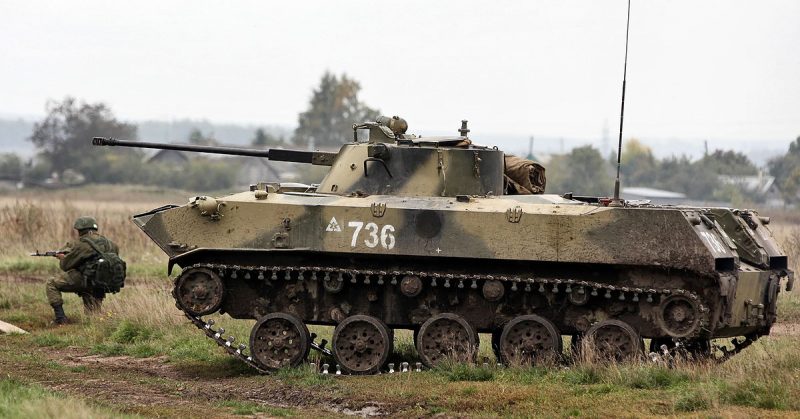Infantry fighting vehicles (IFVs) were a vital part of the Soviet Union’s Cold War military machine. The nation led the way in developing and fielding this more combat-oriented alternative to the armored personnel carrier (APC). The BMD series of vehicles was an important part of this.
Arrival
The BMD-1, the first vehicle in this series, was created in the 1960s. It entered service in 1969 and was first spotted in public four years later.
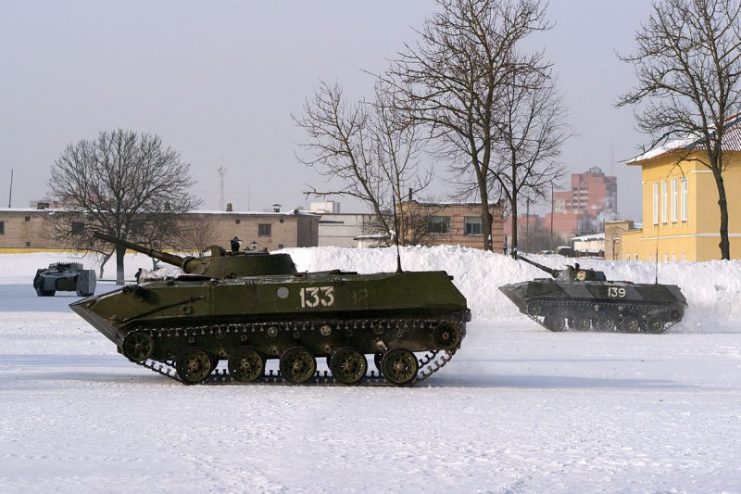
An Airborne Alternative
The BMD-1 was very similar to the existing BMP-1 IFV. The differences arose from its distinct role. The BMD was an IFV that could be used by airborne troops so that they could benefit from the mobility and fire support that their ground-pounding comrades already had. It was an important step forward for these specialist soldiers.
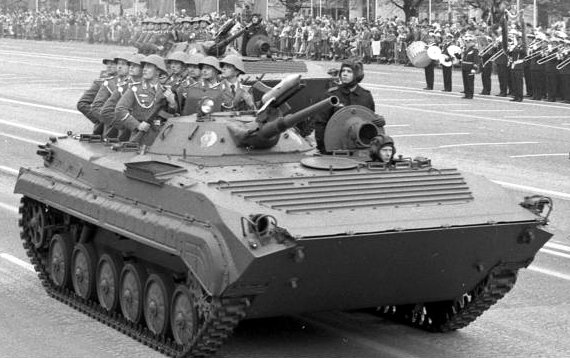
Transport Options
The BMD-1 was specifically designed to be carried by several aircraft already in Soviet service. Four of these were airplanes – the An-12, An-22, Il-76, and An-124. The other two were helicopters – the Mi-6 and Mi-26.
Parachuting
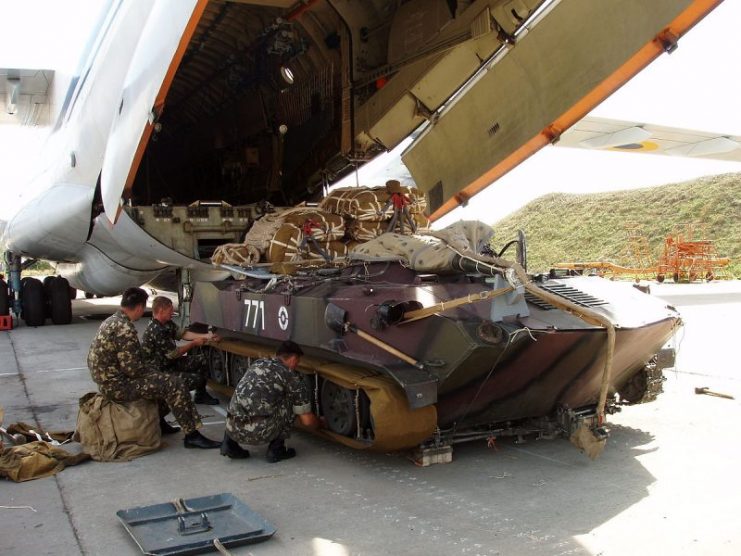
The BMD vehicles could be sent into action by aircraft landing and letting them drive out. Alternatively, they could be dropped by parachute, a better approach for an armed incursion into enemy-held territory.
Landing with the Crew
At first, the crew parachuted separately from their vehicle and then boarded. During the 1970s, this changed. The BMD’s driver and gunner would now be in the vehicle as it fell, ready to take action as soon as it hit the ground.
Aluminum Hull
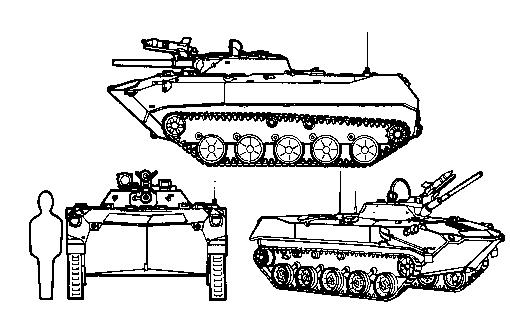
The hull of the BMD-1 was made of welded aluminum. This was more expensive to make than a steel hull. Its advantage was that it made the vehicle considerably lighter and so suitable for aerial transport. Welded hulls had replaced riveted ones for Soviet vehicles during the Second World War when they discovered that they were better able to withstand combat.
Seating
The driver’s seat was in the center of the front of the vehicle. The machine gunner sat to his right and the commander to his left. Another man sat in the turret, while the rest of the squad sat in a compartment at the rear.
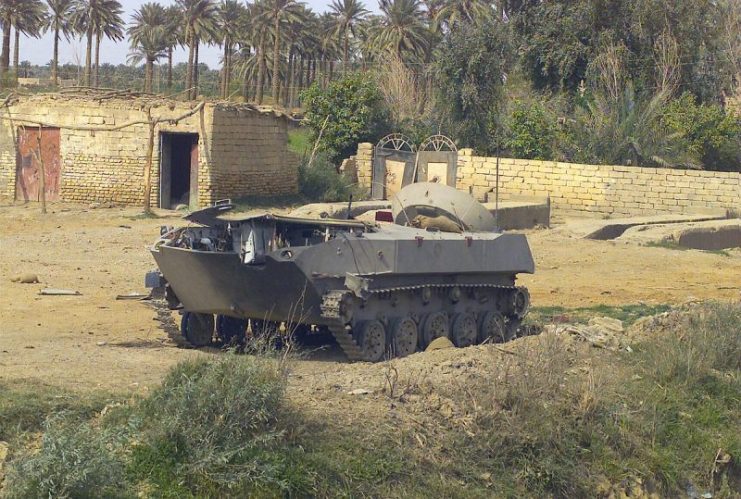
Machine Guns
The BMD-1 was equipped with a pair of bow-mounted 7.62mm PKT machine guns with which to fight enemy infantry.
Main Weaponry
The BMD-1’s main weaponry was mounted in a turret. This consisted of a 2A28 73mm gun, capable of taking on other armored vehicles and defensive positions; another 7.62mm PKT machine gun, to lay down fire against infantry, mounted coaxially with the 73mm gun; and an AT-3 Sagger anti-tank guided missile, mounted above the gun’s barrel, for dealing with heavy targets.
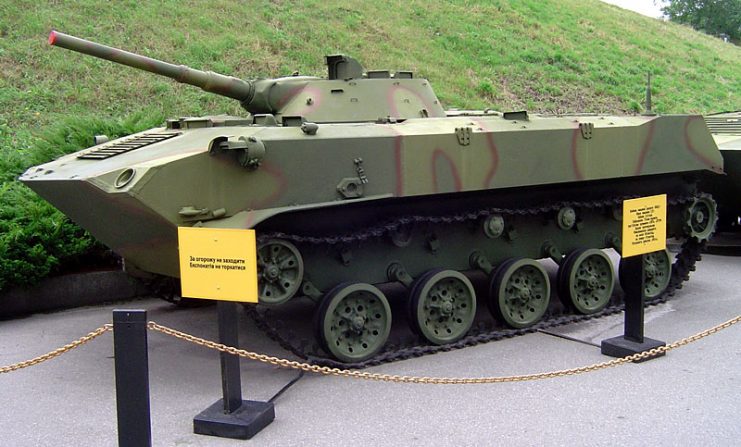
Getting Out
The only way in and out of the BMD-1’s transport compartment was through a concertina-style roof hatch, meaning that the infantry had to climb out to get into battle.
Amphibious
BMD vehicles were capable of amphibious travel, thanks to water jets in the rear. A trim vain was set up on the front before going into the water.
Protection Against Unconventional Weapons
BMDs had systems to protect their crews against nuclear, biological, and chemical (NBC) weapons.
Infra-red Equipment
To avoid becoming a target while driving in the dark, BMDs were equipped with infra-red driving lights. Their white-light searchlights could also be replaced with an infra-red alternative.
BMD-1 Variants
Several variations on the BMD-1 saw service. The BMD-1K was a command vehicle, with extra comms equipment to help the commander keep in touch with his troops and his superiors. The BMD-1M had better ventilation. The BMD-1P replaced the original missile launcher with an AT-4 Spigot launcher on a pintle mount which could be equipped with a night sight. During the fighting in Afghanistan, some BMD-1s were given an 82mm mortar which could fire backward out of the troop compartment.
Arrival of the BMD-2
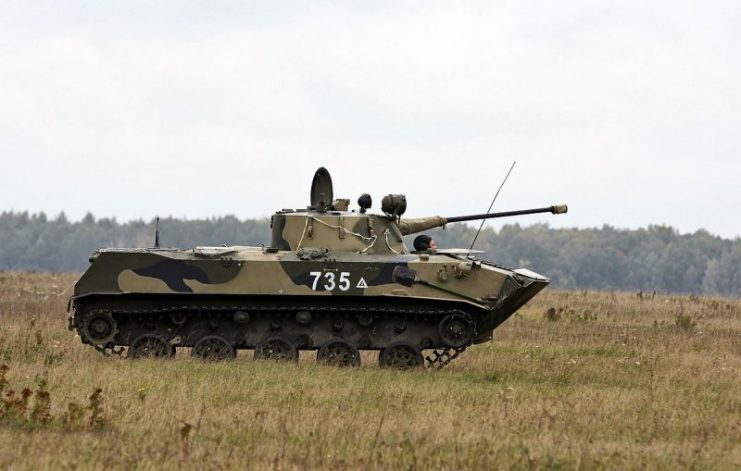
The BMD-1’s successor, the BMD-2, was designed in the 1980s. A prototype was built in 1985 and the finished machine went into production four years later. It looked similar to the BMD-1 but was a substantially new vehicle.
Fewer Machine Guns
Instead of two PKT machine guns at the front, the BMD-2 had one, on the right-hand side.
New Turret
The BMD-2’s turret was significantly different from that of its predecessor. This time, the main weapon was a 2A42 30mm automatic cannon. With better elevation as well as vertical and horizontal stabilization, it could take on helicopters, not just targets on the ground. Once again, the main weapon was accompanied by a coaxial 7.62mm PKT machine gun.
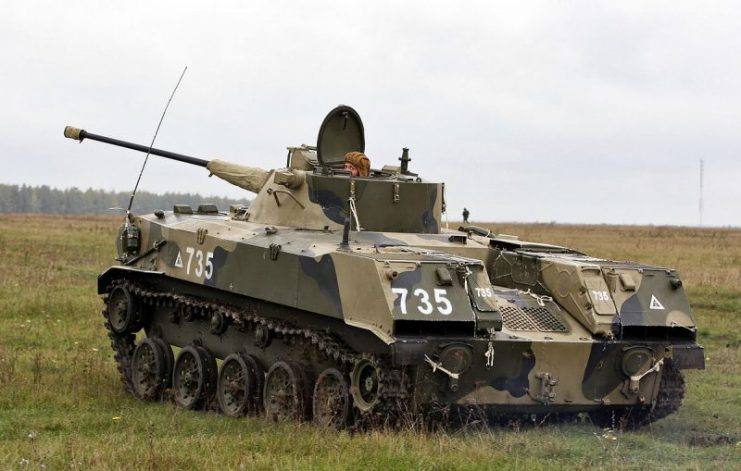
Adaptable Missile Launcher
This time, the vehicle’s missile launcher was pintle mounted. The vehicle also carried a ground mount so that soldiers could fire missiles from positions away from the vehicle. It could be either an AT-4 Spigot or an AT-5 Spandrel anti-tank guided missile launcher.
The BMD-3
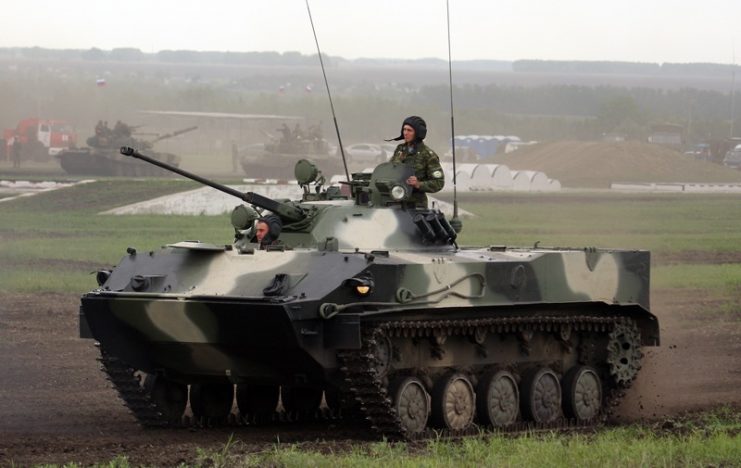
The third model, the BMD-3, reached airborne units in 1990. It was also later given to units of naval infantry, as it was a far better amphibious vehicle than its predecessors.
New Hull, Old Turret
The BMD-3 kept the turret from the BMD-2, which was still a relatively new design, but paired it with a new hull.
Hanging Seats
Instead of being fixed to the floor, the seats for the BMD-3’s driver and front gunners hung from the ceiling. This reduced their chances of being killed by the blast from an anti-tank mine.
Front Weapons
The BMD-3 had two forward weapons – a 5.45mm RPKS machine gun and an AG-17 30mm grenade launcher. Instead of crew members, these were manned by members of the vehicles infantry squad, who could remove the weapons and take them with them for infantry combat.
Smoke Launchers
The BMD-3 had three 81mm smoke grenade launchers to either side of the turret. Fuel injected into the exhaust manifold could also be used to produce smoke. This meant the vehicle could provide cover for its infantry contingent.
